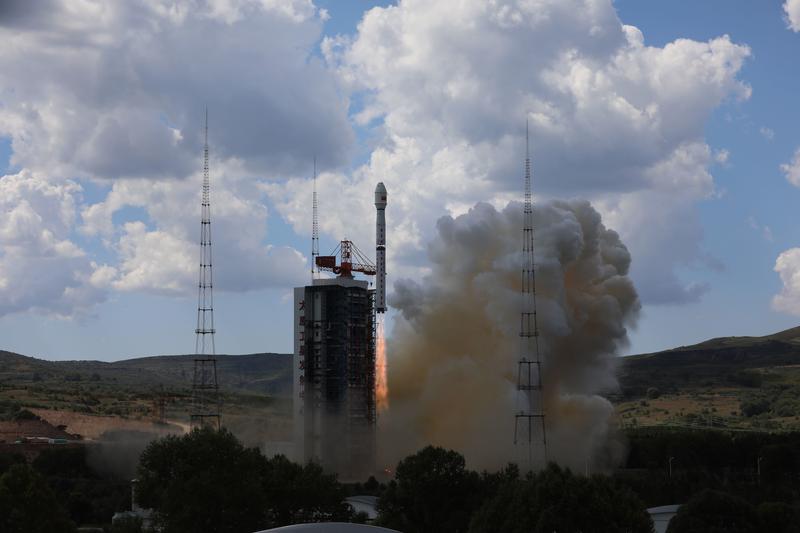 A Long March 4B rocket carrying a Gaofen-11 02 optical remote-sensing satellite launches from the Taiyuan Satellite Launch Center in northern Shanxi province, Sept 7, 2020. (PHOTO / XINHUA)
A Long March 4B rocket carrying a Gaofen-11 02 optical remote-sensing satellite launches from the Taiyuan Satellite Launch Center in northern Shanxi province, Sept 7, 2020. (PHOTO / XINHUA)
BEIJING/TAIYUAN - China will see intensive satellite launches for the country's space-based internet of things (IoT) network in 2021, sources at the China Aerospace Science and Industry Corporation (CASIC) said.
The CASIC is scheduled to launch 12 satellites of the Xingyun project, China's first low-Earth-orbit narrowband constellation for IoT operated by its subsidiary Xingyun Satellite Co. The company plans to send a total of 80 satellites into space to complete the three-stage network around 2023.
The satellite launches would be the second stage of a three-stage spaced-based IoT network, which is expected to be completed around 2023
The first stage of the project was completed after two satellites Xingyun-2 01 and 02 entered their orbits in May this year. The satellites utilize inter-satellite laser links, which enable them to communicate over long distances and hence upgrade the real-time performance of communication services.
READ MORE: China launches two satellites for IoT project
The second stage will see 12 satellites launched next year, further improving the project's global service capability, said the CASIC.
The space-based IoT will have wide coverage and allow easy connection in all weathers and multiple fields. According to engineers, the Xingyun project is anticipated to solve IoT businesses' communication blind spots born from the deficient coverage of cellular wireless communication networks.
ALSO READ: Favorable policies and fierce competition driving IoT industry
New optical remote-sensing satellite launched
Also on Monday, China launched a new optical remote-sensing satellite from the Taiyuan Satellite Launch Center in northern Shanxi province.
The Gaofen-11 02 satellite will mainly be used for land surveys, city planning, land rights confirmation, road network design, crop yield estimation and disaster prevention and mitigation. It will also offer support for the Belt and Road construction
The Gaofen-11 02 satellite was launched by a Long March-4B rocket at 1:57 pm (Beijing Time), according to the center. It was the 345th flight mission by a Long March carrier rocket.
Gaofen-11 02 has a resolution up to the sub-meter level. It will mainly be used for land surveys, city planning, land rights confirmation, road network design, crop yield estimation and disaster prevention and mitigation.
The newly launched satellite will also offer information support for the Belt and Road construction.
Together with the Gaofen-11 01 satellite, which was launched in 2018, Gaofen-11 02 will form an in-orbit network to improve the country's satellite observation efficiency.
READ MORE: China receives data from three Gaofen-1 satellites
The Long March-4B is a three-stage liquid-fueled rocket developed by the Shanghai Academy of Spaceflight Technology, affiliated to the China Aerospace Science and Technology Corporation. It has the ability to launch single and multiple satellites with different orbital requirements.
Monday's launch is the third mission of the Long March-4 series of carrier rockets this year. According to the rocket developer, 2020 will see several launches of the rocket model.


